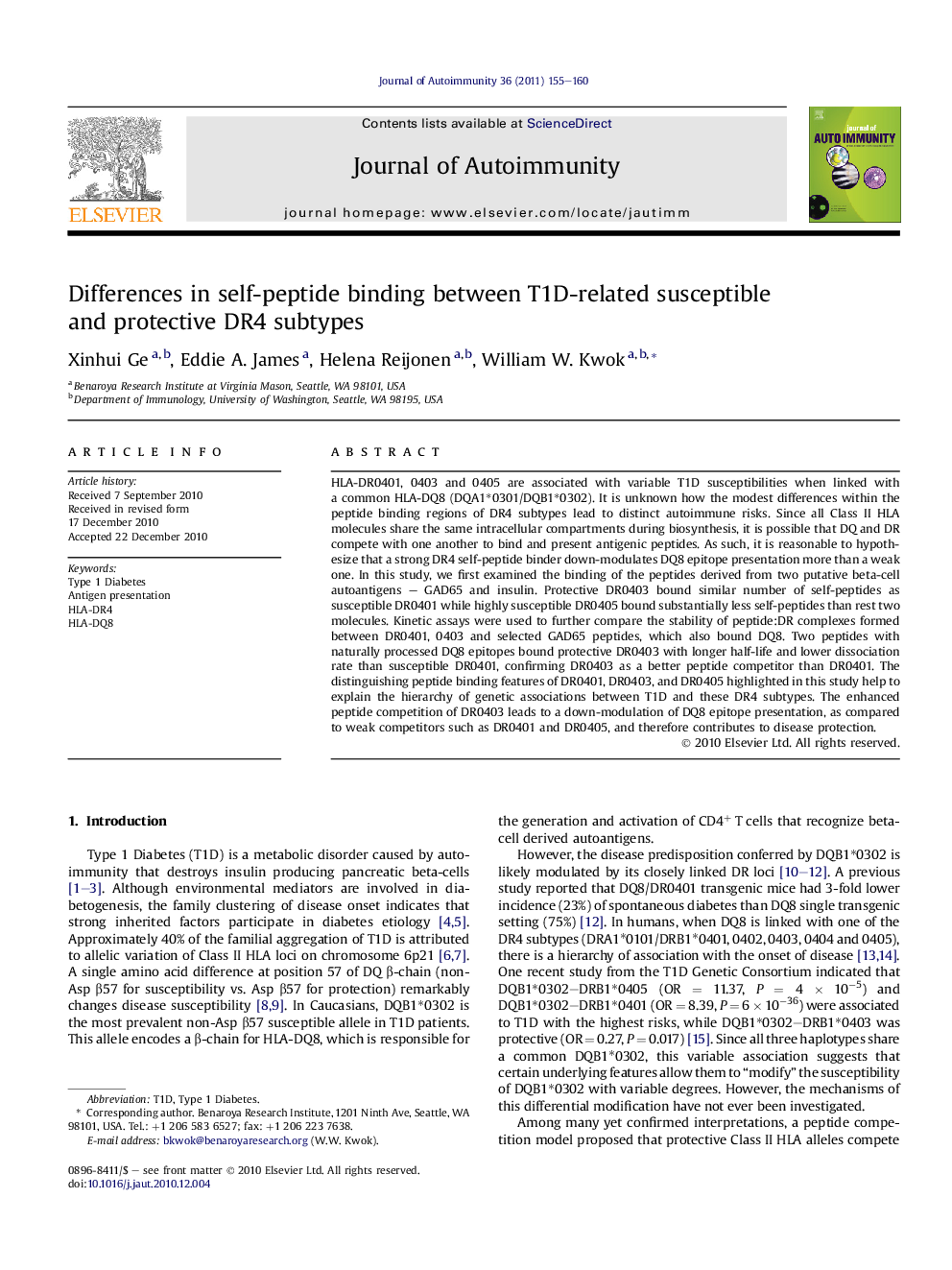| Article ID | Journal | Published Year | Pages | File Type |
|---|---|---|---|---|
| 3368092 | Journal of Autoimmunity | 2011 | 6 Pages |
HLA-DR0401, 0403 and 0405 are associated with variable T1D susceptibilities when linked with a common HLA-DQ8 (DQA1∗0301/DQB1∗0302). It is unknown how the modest differences within the peptide binding regions of DR4 subtypes lead to distinct autoimmune risks. Since all Class II HLA molecules share the same intracellular compartments during biosynthesis, it is possible that DQ and DR compete with one another to bind and present antigenic peptides. As such, it is reasonable to hypothesize that a strong DR4 self-peptide binder down-modulates DQ8 epitope presentation more than a weak one. In this study, we first examined the binding of the peptides derived from two putative beta-cell autoantigens – GAD65 and insulin. Protective DR0403 bound similar number of self-peptides as susceptible DR0401 while highly susceptible DR0405 bound substantially less self-peptides than rest two molecules. Kinetic assays were used to further compare the stability of peptide:DR complexes formed between DR0401, 0403 and selected GAD65 peptides, which also bound DQ8. Two peptides with naturally processed DQ8 epitopes bound protective DR0403 with longer half-life and lower dissociation rate than susceptible DR0401, confirming DR0403 as a better peptide competitor than DR0401. The distinguishing peptide binding features of DR0401, DR0403, and DR0405 highlighted in this study help to explain the hierarchy of genetic associations between T1D and these DR4 subtypes. The enhanced peptide competition of DR0403 leads to a down-modulation of DQ8 epitope presentation, as compared to weak competitors such as DR0401 and DR0405, and therefore contributes to disease protection.
